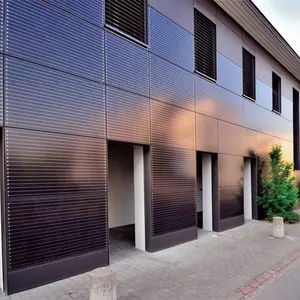Introduction to Thin Film Solar Roofing
Thin film solar roofing is revolutionizing the way we think about energy-efficient building materials. This innovative technology not only enhances the aesthetic appeal of structures but also promotes sustainability by harnessing solar energy. In contrast to traditional solar panels, thin film solar roofing offers a streamlined, flexible option that integrates seamlessly into the design of various types of architecture. As more businesses and homeowners seek to reduce their carbon footprint, thin film solar roofing stands out as an eco-friendly and practical choice.
Types of Thin Film Solar Roofing
Thin film solar roofing comes in several types, each offering unique benefits and applications:
- Cadmium Telluride (CdTe): Known for its high efficiency and low cost, CdTe thin film is suitable for large-scale installations.
- Amorphous Silicon (a-Si): Offers flexibility and lower production costs, making it ideal for residential projects and unique building designs.
- Organic Photovoltaics (OPV): These lightweight and flexible materials can be integrated into various surfaces, providing design versatility.
- Building-Integrated Photovoltaics (BIPV): Combining aesthetics with function, BIPV solutions replace traditional roofing materials while generating electrical power.
Applications of Thin Film Solar Roofing
The applications of thin film solar roofing are diverse and continually expanding. Here are several notable areas where this technology is making an impact:
- Residential Buildings: Homeowners are installing thin film solar roofing to reduce energy costs and embrace renewable energy.
- Commercial Properties: Businesses utilize thin film systems to lower operational costs and increase property value while contributing to sustainability goals.
- Educational Institutions: Schools are adopting solar roofing as part of their commitment to sustainability, serving as a learning tool for students.
- Transportation Infrastructure: Thin film solar is increasingly being integrated into structures like bus stops and charging stations, making them energy self-sufficient.
Advantages of Thin Film Solar Roofing
Thin film solar roofing offers several compelling advantages that make it a preferred choice in many situations:
- Lightweight Design: Unlike traditional solar panels, thin film roofing materials are lightweight, reducing structural load and enabling easier installation.
- Flexibility: The flexible nature of thin film allows it to be applied to various surfaces, including curved or uneven structures.
- Low Production Cost: Production methods for thin film technology are less resource-intensive, leading to lower costs and wider accessibility.
- Sustainable Energy Generation: By converting sunlight into electricity, thin film solar roofing contributes to reducing dependency on fossil fuels.
- Aesthetics: The sleek, modern look of thin film roofs can enhance a building's appearance without compromising on functionality.





















































